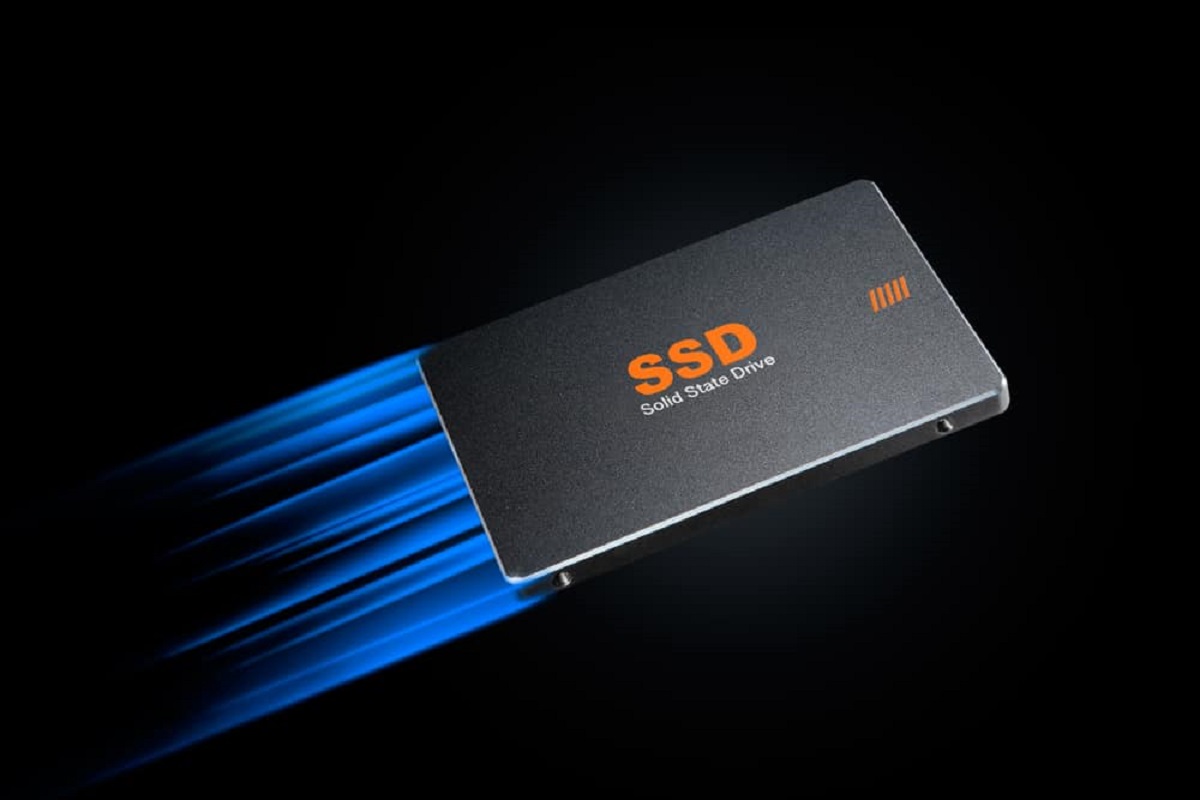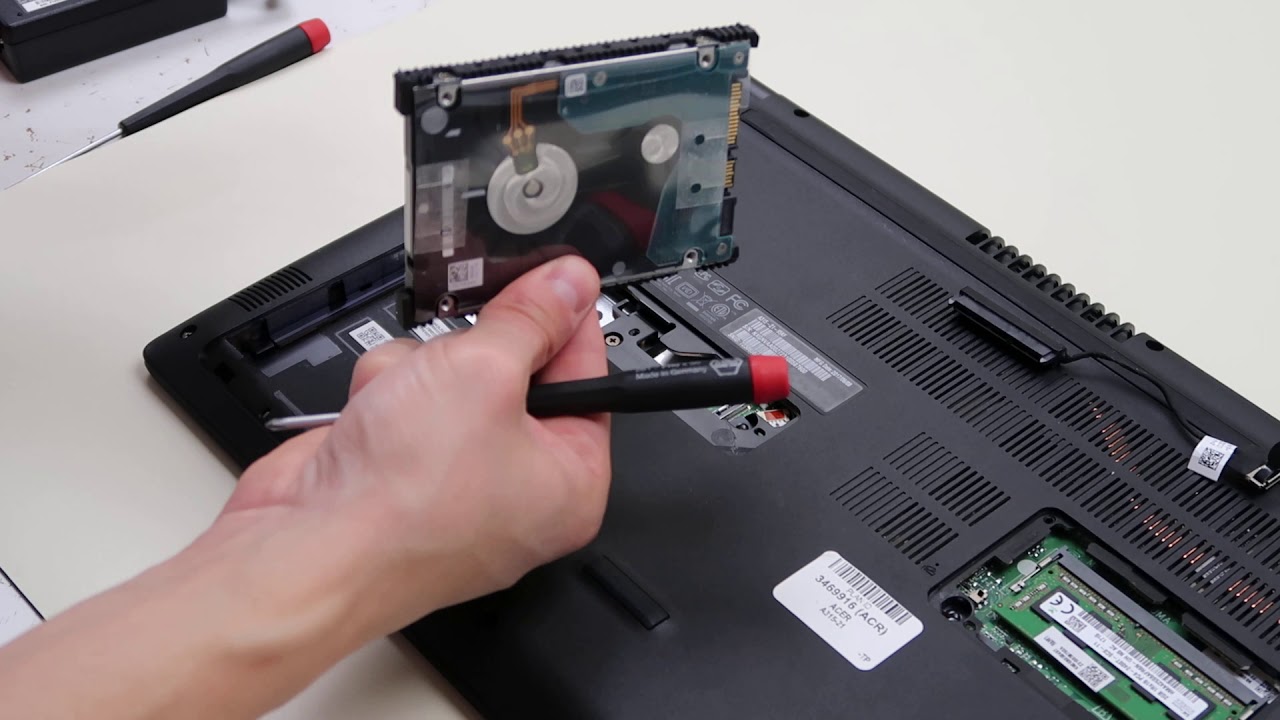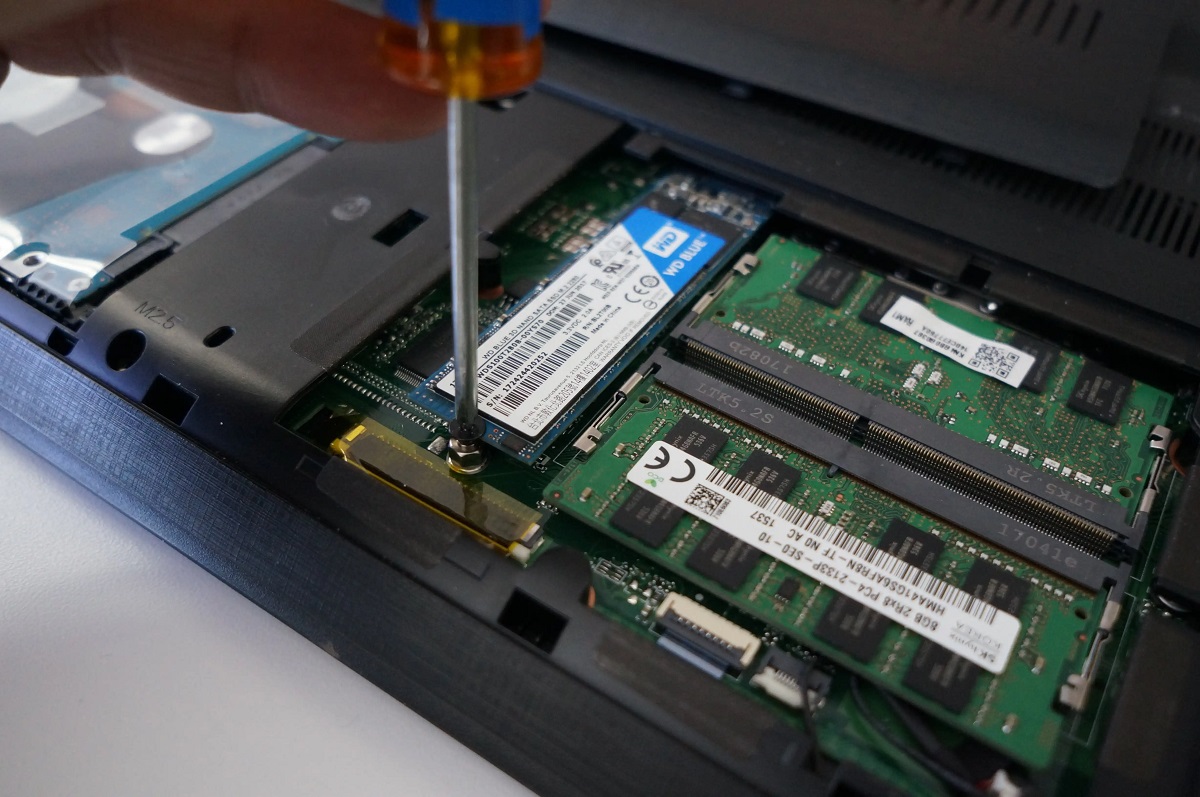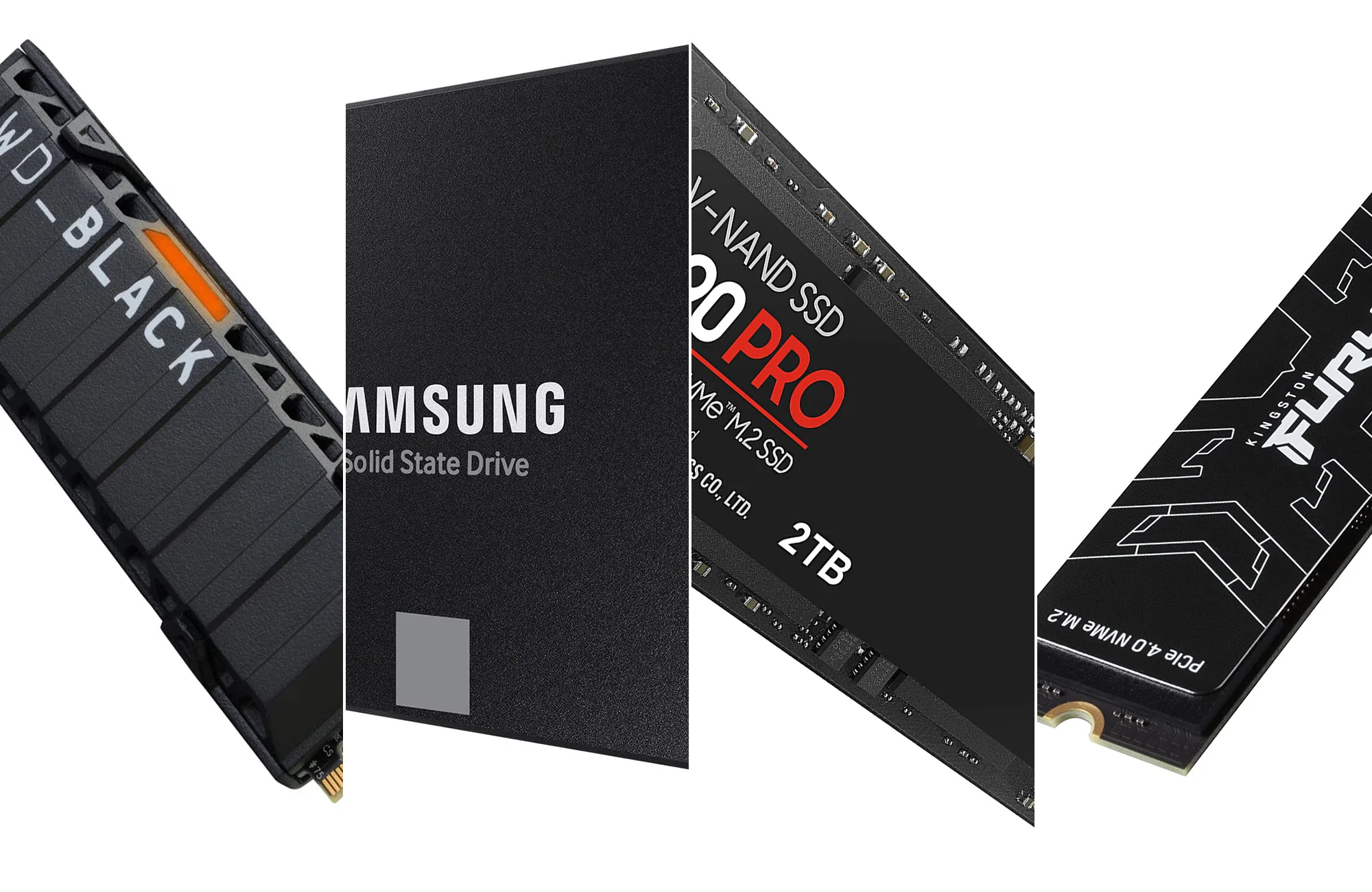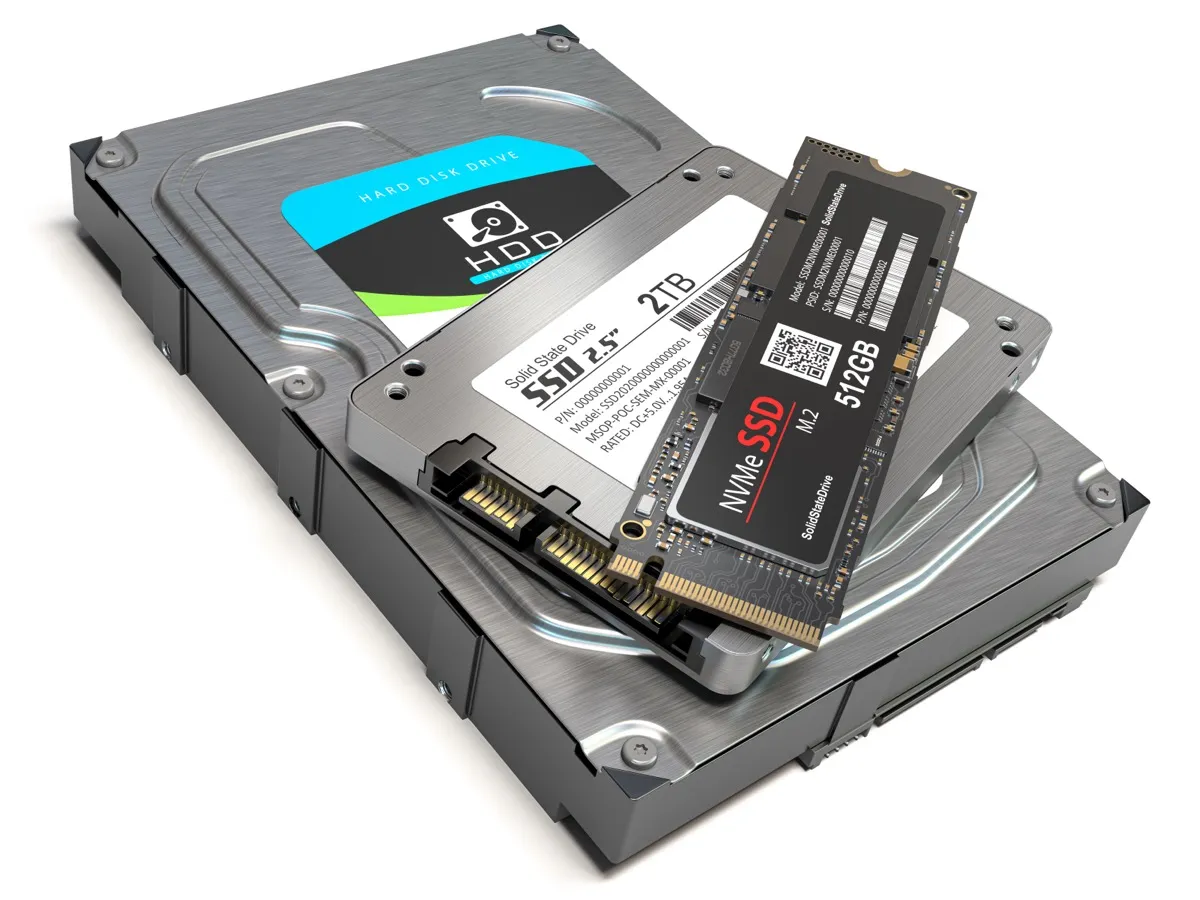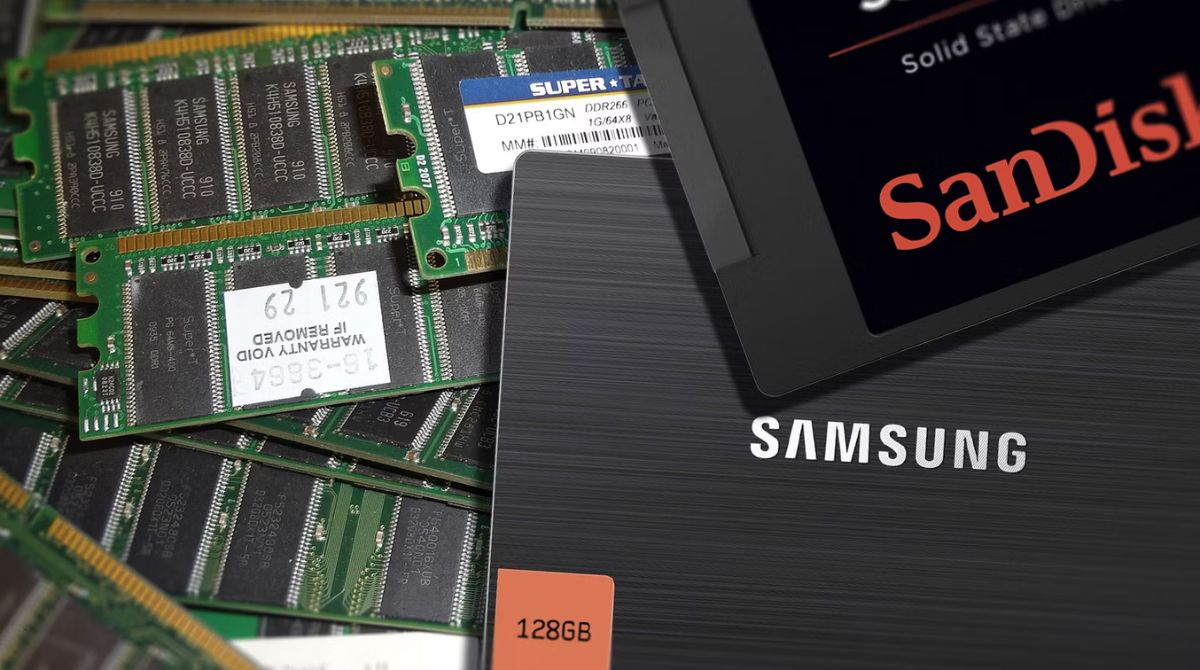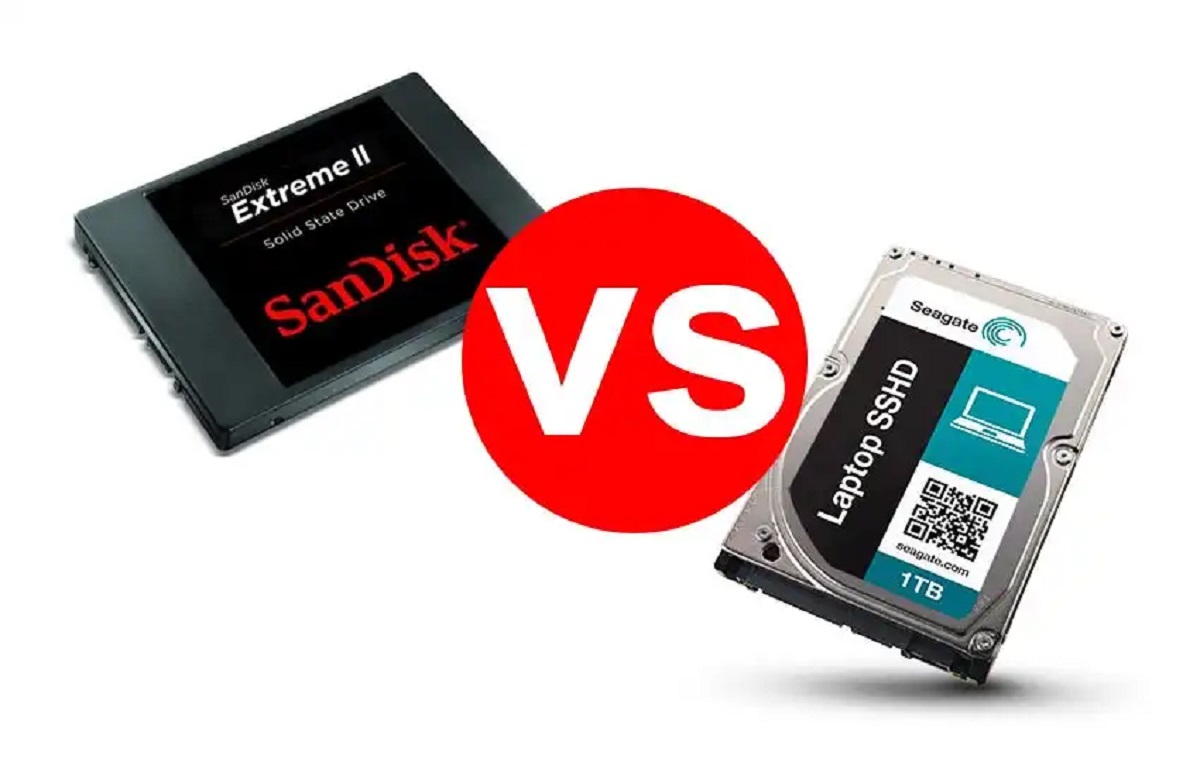Understanding Solid State Drives (SSDs)
Solid State Drives (SSDs) have revolutionized the storage industry with their speed, reliability, and efficiency. Unlike traditional Hard Disk Drives (HDDs), which use spinning platters and mechanical arms to read and write data, SSDs utilize flash memory technology to store and retrieve information quickly. This fundamental difference in their design leads to several advantages and benefits that make SSDs a popular choice for both personal and professional use.
First and foremost, SSDs offer significantly faster data access times compared to HDDs. Traditional hard drives rely on physical components that need to move and spin, resulting in slower data transfer rates. In contrast, SSDs have no moving parts, allowing them to deliver almost instant access to stored data. This means faster boot times, quicker application launches, and reduced loading times for files and documents.
Another key advantage of SSDs is their increased durability and reliability. Thanks to the absence of moving parts, SSDs are inherently less prone to mechanical failure or damage caused by drops or vibrations. They are also more resistant to temperature fluctuations and shock, making them suitable for use in mobile devices and laptops. In addition, because SSDs do not rely on spinning disks, they generate less heat and noise, contributing to a quieter and cooler computing experience.
Furthermore, SSDs are more power-efficient compared to HDDs. The lack of mechanical components allows them to consume less energy during operation, resulting in extended battery life for laptops and other portable devices. This power efficiency also translates to lower electricity bills and reduced environmental impact.
It is worth noting that SSDs tend to be more expensive per gigabyte than traditional hard drives. However, the price of SSDs has been steadily decreasing over the years, making them much more affordable and accessible. Additionally, the numerous benefits they provide make them a worthwhile investment for those seeking improved system performance and reliability.
In summary, SSDs offer a significant technological advancement in storage solutions. With their faster data access times, increased durability, improved power efficiency, and overall enhanced performance, SSDs have become the preferred choice for many individuals and businesses. In the next sections, we will explore the specific impact of using an SSD on system performance in various areas, such as boot times, application load times, file transfer speeds, overall system responsiveness, and gaming performance.
Advantages of Solid State Drives (SSDs)
Solid State Drives (SSDs) offer numerous advantages over traditional Hard Disk Drives (HDDs), making them a popular choice for individuals and businesses alike. Let’s explore some of the key advantages SSDs bring to the table.
First and foremost, the most significant advantage of SSDs is their blazing-fast speed. Unlike HDDs that rely on mechanical components to read and write data, SSDs use flash memory technology, allowing for near-instantaneous data access. This translates to faster boot times, quicker application launches, and snappier overall system performance. Whether you’re a professional working with demanding applications or a casual user who values responsiveness, the speed advantage of SSDs is hard to ignore.
Another major advantage of SSDs is their enhanced durability and reliability. With no moving parts, SSDs are more resistant to physical shock and damage caused by drops or vibrations. This makes them perfect for portable devices like laptops, as they can withstand the rigors of daily use and transportation. Additionally, SSDs are generally more able to withstand temperature fluctuations, reducing the risk of data loss due to extreme heat or cold.
SSDs also excel in power efficiency. Traditional HDDs require energy to power the spinning platters and moving parts, resulting in higher power consumption. In contrast, SSDs consume significantly less power due to their lack of mechanical components. This not only prolongs battery life on laptops and mobile devices but also leads to lower electricity bills and a reduced environmental impact.
Furthermore, SSDs operate silently, as they lack the noise-producing mechanical parts found in HDDs. This quiet operation can significantly improve the user experience, particularly for those working in noise-sensitive environments or enjoying multimedia content without distractions. Additionally, the absence of moving parts means that SSDs generate less heat, resulting in a cooler and more stable system environment.
Lastly, SSDs offer a compact and lightweight design. Their smaller form factor allows them to fit into sleek laptops, ultrabooks, and compact desktop systems. This space-saving advantage is particularly valuable for those who prioritize portability or have limited physical space for their computing setup.
In summary, the advantages of Solid State Drives (SSDs) are clear. Their exceptional speed, enhanced durability, power efficiency, quiet operation, and compact design set them apart from traditional HDDs. As SSD technology continues to advance and become more affordable, it’s no wonder that SSDs are gradually replacing HDDs as the preferred choice for storage solutions.
Impact of Using an SSD on System Performance
The decision to upgrade from a traditional Hard Disk Drive (HDD) to a Solid State Drive (SSD) can have a significant impact on system performance. Let’s explore the various areas where an SSD can make a difference.
One of the most noticeable improvements is in boot times. With an SSD, your computer can start up in a matter of seconds rather than the minutes it may take with an HDD. This means you can get to work or start exploring your favorite applications without the frustrating wait.
Application load times are also drastically reduced with an SSD. Whether you’re opening a web browser, launching a photo editing software, or loading the latest video game, SSDs have the ability to retrieve data quickly, resulting in near-instant application responsiveness.
When it comes to file transfer speeds, SSDs shine. Copying large files or performing backups becomes significantly faster, allowing you to save time and be more productive. This is especially useful for professionals working with large multimedia files or individuals who frequently move data between devices.
Overall system responsiveness is greatly enhanced with an SSD. Every action, from opening programs to navigating through folders, feels smoother and more fluid. This improved responsiveness translates to a more satisfying user experience, minimizing frustration and maximizing productivity.
Gaming enthusiasts can also benefit from using an SSD. Games load faster, reducing wait times and allowing you to jump into the action without delay. Additionally, an SSD can help reduce in-game stutters and lag, providing a smoother gameplay experience.
It’s essential to note that the impact of an SSD on system performance may vary depending on the specific hardware and software configuration. Factors such as the processor speed, amount of RAM, and the optimization of the operating system and applications can influence the overall performance gains from an SSD.
In summary, upgrading to an SSD can have a profound impact on system performance. Faster boot times, reduced application load times, quicker file transfer speeds, improved overall system responsiveness, and enhanced gaming performance are all advantages of using an SSD. Whether you’re a professional looking to increase productivity or a gamer seeking a seamless gaming experience, an SSD is a worthwhile investment that can breathe new life into your system.
Boot Time Comparison: HDD vs. SSD
The boot time of a computer, referring to the time it takes for the system to start up and become usable, can be significantly improved with the use of a Solid State Drive (SSD) compared to a traditional Hard Disk Drive (HDD). Let’s explore the differences in boot time between these two storage options.
When booting up a computer with an HDD, the system needs to spin up the platters and wait for the mechanical components to position themselves correctly to access the necessary startup files. This process can take a considerable amount of time, resulting in longer boot times. On the other hand, an SSD does not have moving parts, enabling it to access and retrieve data almost instantly.
With an SSD, the boot time of a computer can be reduced significantly. In many cases, the difference can be as dramatic as going from minutes to just a few seconds. This means that with an SSD, you can power on your computer and be ready to start working or browsing the internet in no time.
Another factor that contributes to the faster boot time of an SSD is the lack of fragmentation. Over time, HDDs tend to become fragmented, meaning that files are scattered across different areas of the disk. This fragmentation can result in longer seek times, further slowing down the boot process. However, SSDs are not affected by fragmentation, as there are no physical read/write heads to access specific locations on the disk.
It is essential to note that while an SSD can significantly improve boot times, other factors can also influence the overall performance. The processor speed, amount of RAM, and the optimization of the operating system and startup programs can impact the time it takes for the system to become fully operational.
In summary, choosing an SSD over an HDD can dramatically decrease the boot time of a computer. The absence of moving parts and the lack of fragmentation contribute to quicker access and retrieval of startup files, resulting in a much faster startup process. Upgrading to an SSD can save valuable time, allowing you to be more productive and get to work or enjoy your computer without the frustrating wait.
Application Load Times: HDD vs. SSD
One of the most significant advantages of using a Solid State Drive (SSD) over a traditional Hard Disk Drive (HDD) is the significant reduction in application load times. Let’s explore the differences in application load times between these two storage options.
When launching an application with an HDD, the system needs to read and retrieve the necessary files from different physical locations on the disk, resulting in longer load times. On the other hand, SSDs excel at retrieving data quickly, allowing applications to load almost instantly.
With an SSD, application load times can be drastically reduced. Whether it’s opening a web browser, launching a photo editing software, or starting a video game, the time it takes for the application to appear on your screen is significantly shorter. This means you can dive into your work or leisure activities without having to wait for the application to load.
Moreover, once an application is loaded, SSDs continue to provide snappier responsiveness throughout its usage. Tasks such as opening multiple tabs in a web browser or switching between applications become smoother and more fluid with an SSD. This improved responsiveness allows for a seamless user experience and enhances productivity.
It’s important to note that the performance gains with application load times vary depending on the specific application and its size. Larger applications with numerous files or complex coding might benefit more from the speed of an SSD compared to smaller applications.
Additionally, the overall performance of an application can be influenced by other factors such as the processor speed, amount of RAM, and the optimization of the software itself. While an SSD can significantly improve load times, it is essential to consider these other components for maximum performance gains.
In summary, upgrading to an SSD can significantly reduce application load times, allowing for almost instant access to your favorite software and programs. The fast data retrieval capability of SSDs provides an enjoyable user experience with improved responsiveness and smoother application usage. Whether you’re a professional working with resource-intensive applications or a casual user who values efficiency, an SSD can make a noticeable difference in application load times and overall system performance.
File Transfer Speeds: HDD vs. SSD
When it comes to transferring files, the speed at which data is moved between storage devices can have a significant impact on productivity and efficiency. Let’s compare the file transfer speeds of a Solid State Drive (SSD) and a traditional Hard Disk Drive (HDD) to understand how they differ.
With an HDD, file transfer speeds are typically limited by the physical mechanics of the disk. As the platters spin, the read/write heads need to physically move to the correct location to access the data. This mechanical process can result in slower transfer speeds, especially when dealing with large or fragmented files.
On the other hand, SSDs utilize flash memory technology, which allows for near-instantaneous data retrieval. This translates to significantly faster file transfer speeds compared to HDDs. Whether you’re copying large files, transferring folders, or performing backups, an SSD can save you valuable time and increase productivity.
Furthermore, SSDs benefit from their ability to handle random read and write operations more efficiently than HDDs. Random access refers to the accessing of data from different locations on the storage device simultaneously. SSDs excel at random access, allowing for faster and more concurrent transfer of multiple files or folders.
Not only do SSDs provide faster transfer speeds, but they are also less susceptible to performance degradation due to factors such as fragmentation. HDDs tend to become fragmented over time, leading to slower read and write speeds. SSDs, on the other hand, are not affected by fragmentation, offering consistent and reliable performance over their lifespan.
It’s important to note that while SSDs offer faster file transfer speeds, the overall performance may still be influenced by other factors. The speed of the processor, the amount of RAM, and the connection interface (e.g., SATA or NVMe) can also impact the transfer speeds between the storage device and the rest of the system.
In summary, upgrading to an SSD can significantly improve file transfer speeds compared to a traditional HDD. The absence of mechanical parts and the ability to handle random access operations efficiently make SSDs the preferred choice for those who deal with large files, perform regular backups, or require fast data transfers. The increased productivity and time-saving benefits of an SSD make it a worthwhile investment for individuals and businesses seeking faster and more efficient file transfer operations.
Overall System Responsiveness: HDD vs. SSD
The overall responsiveness of a system refers to how quickly and smoothly it responds to user input and commands. The choice of storage device, whether it is a Solid State Drive (SSD) or a traditional Hard Disk Drive (HDD), plays a significant role in determining the overall system responsiveness. Let’s compare the impact of HDDs and SSDs on the responsiveness of a system.
SSDs offer a marked advantage over HDDs in terms of system responsiveness. The use of flash memory technology in SSDs allows for near-instantaneous access to data, resulting in a snappier and more responsive system. Whether it’s launching applications, opening files, or navigating through folders, SSDs can provide an almost seamless user experience.
One area where SSDs shine in system responsiveness is multitasking. The ability to handle multiple simultaneous tasks without significant slowdowns allows you to work more efficiently and smoothly. SSDs excel at random access operations, allowing for fast retrieval of data from different locations, which contributes to a more responsive multitasking experience.
Another factor that contributes to the overall system responsiveness with SSDs is the elimination of seek and latency times. HDDs rely on mechanical components that need to physically move to access data, resulting in delays and increased latency. SSDs, on the other hand, have no moving parts, leading to virtually nonexistent seek and latency times. This translates to an instant response when interacting with the system, enhancing the overall user experience.
In addition to faster response times, SSDs offer consistent performance over their lifespan, regardless of fragmentation. HDDs can become fragmented over time, leading to slower read and write speeds. On the other hand, SSDs are not affected by fragmentation, ensuring reliable and responsive performance throughout their usage.
It’s important to note that while SSDs significantly improve system responsiveness, other components of a system, such as the processor and amount of RAM, also play a role in overall performance. However, the storage device, particularly when it comes to accessing and retrieving data, has a significant impact on system responsiveness.
In summary, the use of an SSD over an HDD can provide a noticeable improvement in overall system responsiveness. The instant data access, absence of seek and latency times, and consistent performance make SSDs the preferred choice for those who value a fast, smooth, and responsive computing experience. Whether you’re a professional handling demanding tasks or a casual user who appreciates a snappy system, upgrading to an SSD can enhance the overall responsiveness of your system.
Gaming Performance: HDD vs. SSD
Gaming enthusiasts are always looking for ways to enhance their gaming experience, and the choice of storage device can have a significant impact on gaming performance. Let’s compare the gaming performance of a Solid State Drive (SSD) and a traditional Hard Disk Drive (HDD) to understand the differences.
SSDs offer a notable advantage over HDDs when it comes to gaming performance. The fast data transfer speeds of SSDs allow for quicker access to game files and assets, resulting in shorter loading times. Games load significantly faster when installed on an SSD, reducing the waiting period and allowing players to jump into the action without delay.
Additionally, an SSD can contribute to a smoother gaming experience by reducing stutters and lag. Games with large file sizes or open-world environments that require frequent data loading can benefit greatly from the faster read speeds of an SSD. This translates to reduced texture popping, faster rendering, and improved overall gameplay performance.
Another advantage of using an SSD in gaming is the ability to quickly switch between games. Whether you’re a casual gamer who enjoys switching between different titles or a professional competing in e-sports, SSDs offer near-instant access to installed games, allowing for a seamless and uninterrupted gaming experience.
Furthermore, SSDs can provide an advantage in online multiplayer games, where information needs to be quickly loaded and processed. The faster load times of SSDs give players a head start, which can be crucial in competitive gaming scenarios where split-second decisions matter.
While SSDs undoubtedly offer improvements in gaming performance, it’s important to consider that other factors can also influence overall gaming experience. The speed of the processor, the amount of RAM, and the graphics card play significant roles in gaming performance. However, the storage device, particularly when it comes to loading game files and reducing latency, can provide noticeable enhancements with an SSD.
In summary, upgrading to an SSD can greatly enhance gaming performance compared to a traditional HDD. The faster loading times, reduced stutters and lag, and improved overall game responsiveness make SSDs the preferred choice for gamers. Whether you’re seeking shorter loading times, smoother gameplay, or a competitive edge, an SSD can significantly enhance the gaming experience by providing faster access to game files and assets.
Factors Influencing SSD Performance
The performance of a Solid State Drive (SSD) can be influenced by several factors that can impact its speed, efficiency, and overall effectiveness. Let’s explore some of the key factors that influence SSD performance.
1. Controller: The controller is a crucial component of an SSD, responsible for managing data flow and optimizing performance. The quality and efficiency of the controller can have a significant impact on the overall performance and responsiveness of the SSD. High-quality controllers can improve read and write speeds and ensure efficient data management.
2. Interface: The interface through which the SSD connects to the motherboard, such as SATA (Serial ATA) or NVMe (Non-Volatile Memory Express), can affect the transfer speeds and performance of the SSD. NVMe offers faster data transfer rates and lower latency compared to SATA, allowing for improved SSD performance in compatible systems.
3. NAND Flash Memory: The type and quality of NAND flash memory used in an SSD can influence its performance. NAND flash memory comes in different generations, such as TLC (Triple-Level Cell), MLC (Multi-Level Cell), and SLC (Single-Level Cell), with varying levels of performance, endurance, and cost. Higher-quality NAND flash memory typically provides faster read and write speeds and longer lifespan.
4. Capacity: The capacity of an SSD can impact its performance. Generally, larger capacity SSDs tend to offer faster speeds and higher performance compared to smaller capacity SSDs. This is because larger SSDs have more available NAND flash memory chips that can be accessed in parallel, allowing for increased data transfer rates.
5. Temperature: Extreme temperatures can affect the performance and lifespan of an SSD. High temperatures can lead to overheating, resulting in reduced performance and potential data loss. Keeping the SSD at optimal operating temperatures can help maintain its performance and reliability.
6. Firmware: The firmware of an SSD plays a crucial role in optimizing its performance. Regular firmware updates provided by the SSD manufacturer can improve compatibility, fix bugs, enhance performance, and introduce new features. It is recommended to keep the SSD firmware up to date to ensure optimal performance.
7. Usage: The way the SSD is used can also impact its performance. Over time, SSDs can experience performance degradation due to data fragmentation or reaching full capacity. Regular maintenance, such as performing TRIM operations and keeping ample free space on the SSD, can help maintain its performance over the long term.
It’s important to note that while these factors can influence SSD performance, the overall performance of a system may be influenced by other hardware components, such as the processor, amount of RAM, and graphics card. The optimization of the operating system and installed applications can also impact the SSD’s performance.
In summary, factors such as the controller, interface, NAND flash memory, capacity, temperature, firmware, and usage patterns can significantly influence the performance of an SSD. Understanding these factors and selecting high-quality SSDs that meet the specific requirements of your system can help ensure optimal performance and maximize the benefits of using an SSD.
Is Upgrading to an SSD Worth It?
With Solid State Drives (SSDs) becoming more affordable and accessible, many individuals and businesses are considering upgrading from traditional Hard Disk Drives (HDDs). But is it worth it to make the switch? Let’s explore the benefits of upgrading to an SSD to determine if it’s a worthwhile investment.
One of the most significant advantages of upgrading to an SSD is the noticeable improvement in system and application performance. SSDs offer faster data access times, resulting in quicker boot times, reduced application load times, and faster file transfers. This increased speed and responsiveness can significantly enhance productivity, efficiency, and overall user experience.
Another compelling reason to upgrade to an SSD is their enhanced durability and reliability. Unlike HDDs, which have spinning platters and mechanical components that can fail over time, SSDs have no moving parts. This makes SSDs more resistant to physical shock and damage, providing added peace of mind, especially for those who use portable devices or work in environments prone to vibrations or drops.
SSDs are also more power-efficient compared to HDDs. The lack of mechanical components in SSDs allows them to consume less energy during operation, resulting in extended battery life for laptops and reduced electricity bills. The power efficiency of SSDs contributes to a greener and more environmentally friendly computing experience.
Furthermore, upgrading to an SSD offers a significant reduction in noise. Traditional HDDs generate noise due to the spinning platters and mechanical components, whereas SSDs operate silently. This absence of noise can create a more pleasant and quiet working environment, particularly for those who value a peaceful workspace or enjoy multimedia content without distractions.
Additionally, the compact and lightweight design of SSDs is advantageous, particularly for portable devices like laptops. SSDs take up less physical space, allowing for sleeker and thinner laptop designs. This space-saving advantage is ideal for those who prioritize portability or have limited workspace.
It’s important to factor in the cost when considering an SSD upgrade. While SSDs tend to be more expensive per gigabyte than HDDs, the prices have been steadily decreasing. When weighing the performance benefits and long-term advantages of SSDs, many find the added cost to be justifiable.
Ultimately, whether upgrading to an SSD is worth it depends on individual needs and considerations. If improved system performance, faster load times, enhanced durability, reduced power consumption, quieter operation, and a smaller footprint are important to you, then upgrading to an SSD is likely a worthwhile investment.
In summary, upgrading to an SSD can provide numerous benefits, including increased system and application performance, improved durability and reliability, power efficiency, reduced noise, and space-saving design. While there might be an initial cost involved, the long-term advantages and enhanced user experience make upgrading to an SSD a worthwhile consideration for those seeking to optimize their computer’s performance and enjoy a more efficient and satisfying computing experience.







